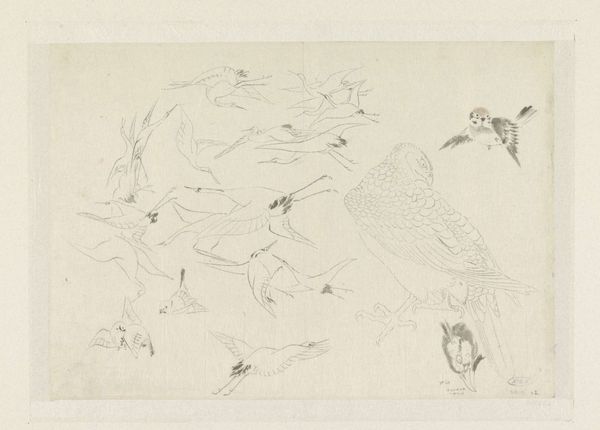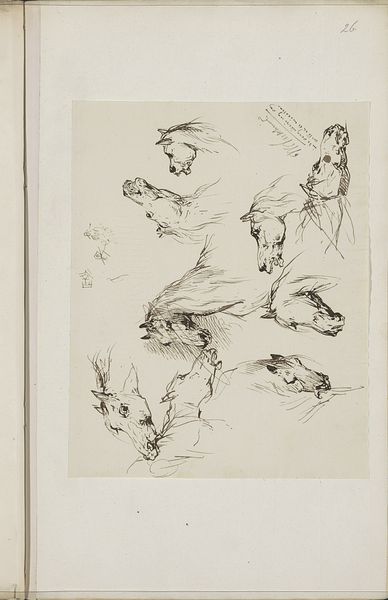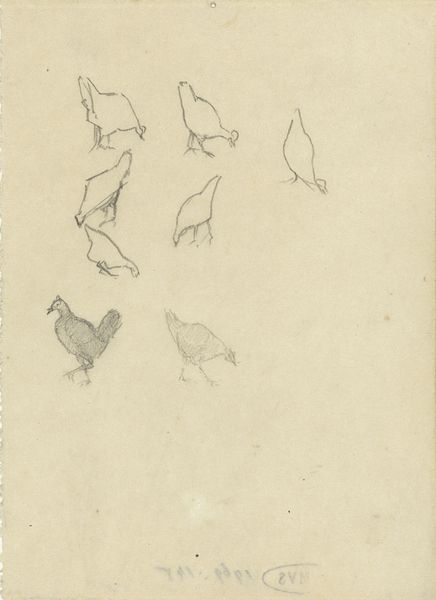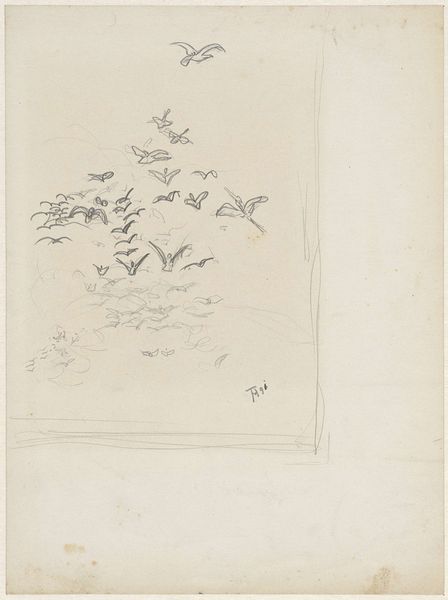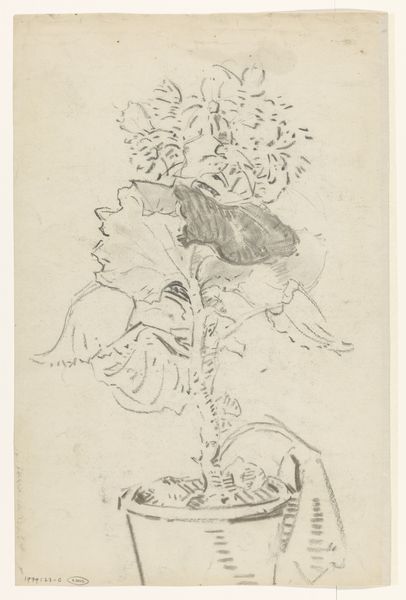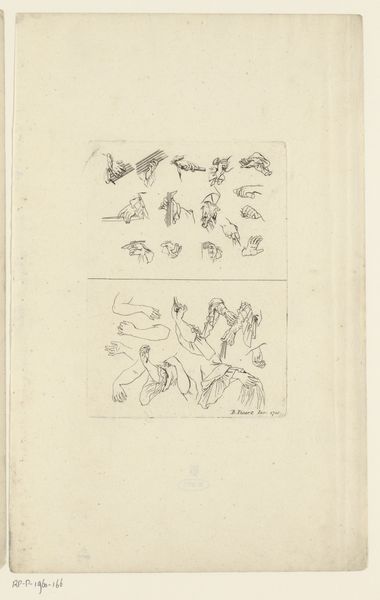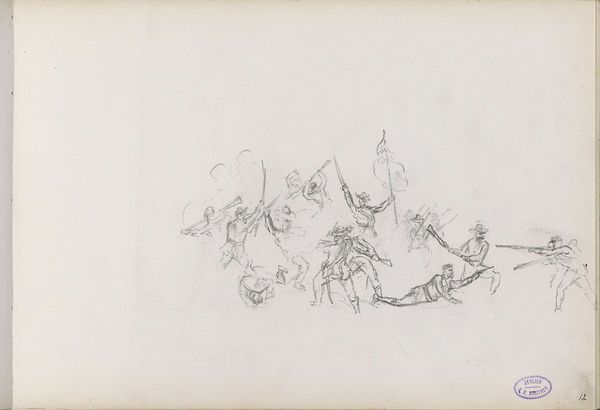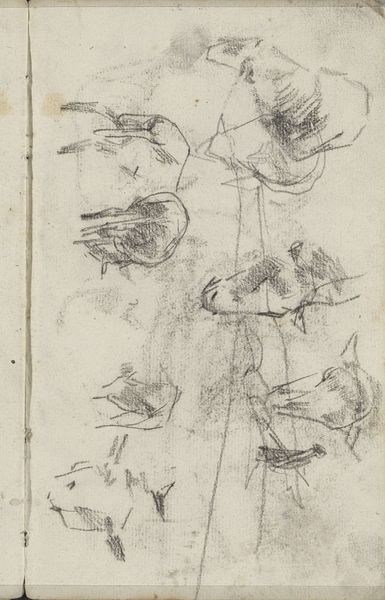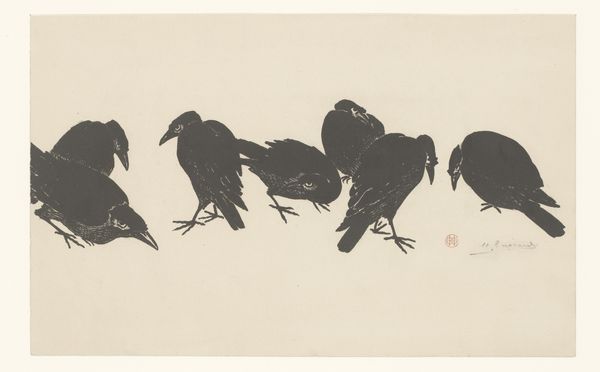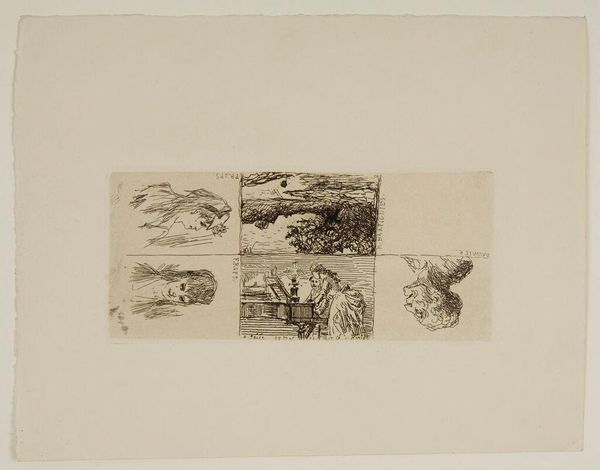
drawing, paper, ink
#
drawing
#
amateur sketch
#
light pencil work
#
pencil sketch
#
asian-art
#
incomplete sketchy
#
figuration
#
paper
#
personal sketchbook
#
ink
#
sketchwork
#
ink drawing experimentation
#
detailed observational sketch
#
sketch
#
line
#
sketchbook drawing
#
genre-painting
#
sketchbook art
Dimensions: height 391 mm, width 272 mm
Copyright: Rijks Museum: Open Domain
Editor: This is "Schetsblad met vogelstudies," a sheet of bird studies by Ishikawa Kazan, dating from somewhere in the 1800s. It's a drawing, done in ink and pencil on paper. What strikes me is how immediate the artist captures movement with such economy of line! How do you interpret this work? Curator: These rapid sketches offer us a glimpse into the artist's practice and the role of observation in artmaking. Consider how the proliferation of such imagery, through prints and drawings, democratized access to nature. How might the increasing accessibility of such studies have shaped popular perceptions of the natural world and artistic skill during that time? Editor: That's interesting! I guess I hadn’t really thought about the audience outside of the artist themselves. Were sketchbooks like these common teaching tools or visual resources at the time? Curator: Precisely! Sketchbooks like this provided readily accessible models for aspiring artists, influencing not just technique but also subject matter. Furthermore, think about the institutional forces – academies, printmaking workshops – that helped circulate and validate these kinds of images. Editor: So, in a way, it's more than just sketches of birds; it's about the standardization of an artistic vocabulary through these visual resources? Curator: Absolutely. And even the choice of depicting birds speaks to certain aesthetic values and the cultural significance attributed to the natural world. What impact do you think art had on popular environmental awareness? Editor: I suppose that the everyday availability of depictions of birds contributed to their desirability, like they are objects of the environment rather than integral pieces to it. So by showcasing these artworks now, in a gallery, are we complicit in repeating this practice? Curator: These are complex questions. Understanding the history of visual representation helps us become more critically aware of the present and future public roles of images and of art itself. Editor: That makes so much sense. Thank you for helping me look at it with a more historical lens! Curator: My pleasure! I, too, learned something valuable through our exchange.
Comments
No comments
Be the first to comment and join the conversation on the ultimate creative platform.
